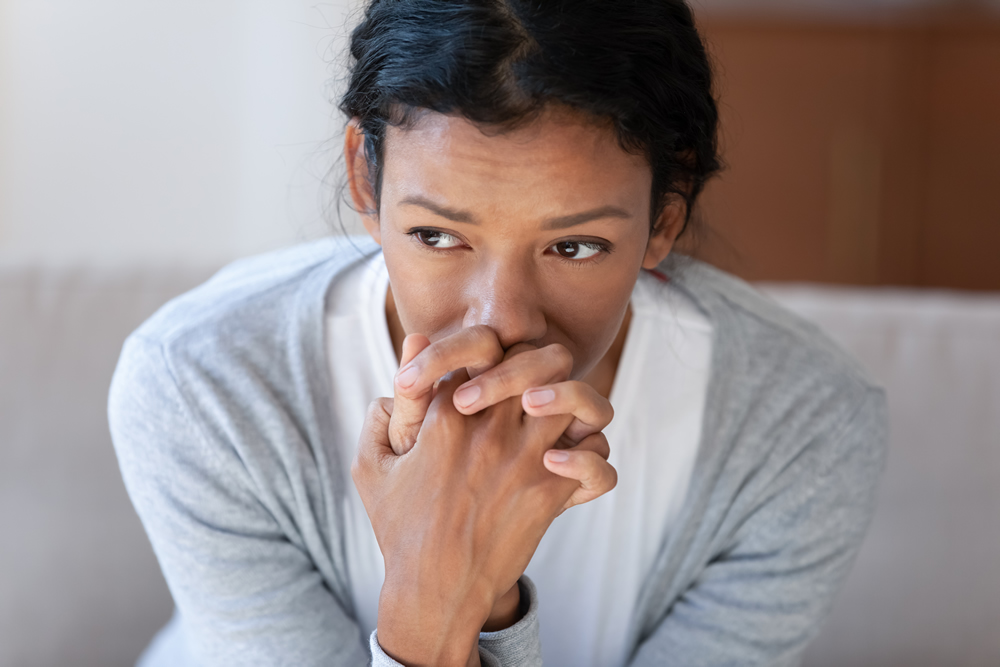Anxiety and Worry

Anxiety is your body’s physical response to threats. It causes a pounding heart, rapid breathing, butterflies in the stomach and a burst of energy as well as mental responses such as excessive fears, worries or obsessive thinking. Everyone feels anxious at times, and a certain level of anxiety is normal, and even helpful, in some situations. Anxiety is your body’s way of keeping you safe.
However, feeling too much anxiety about something, or feeling anxiety that’s not connected to an obvious challenge, isn’t helpful. It can get in the way of your day-to-day activities and affect your quality of life.
Different types of anxiety disorders can also have different symptoms. However, there are some common ones, including: feeling nervous, restless or tense; racing heart or tightening of the chest; breathing rapidly; sweating; feeling weak or tired; sleep disturbance; obsessive thinking excessive fear and worrying; having difficulty thinking about anything other than what’s worrying you; stomach or digestion issues; avoiding situations that make you feel anxious (e.g. taking public transport, going to class or meeting new people).
What is an anxiety disorder?
An anxiety disorder occurs when anxiety starts to impact on a person’s life and prevents them from engaging with friends, family, work or school. Rather than feeling anxious in response to actual danger, someone with an anxiety disorder will experience the same symptoms in situations they perceive as dangerous (e.g. when meeting new people or taking public transportation). Anxiety disorders are the most common of mental disorders and affect nearly 30% of adults at some point in their lives. But anxiety disorders are treatable and a number of effective treatments are available. Treatment helps most people lead normal productive lives.
The main features of an anxiety disorder are fears or thoughts that are chronic (constant) and distressing and that interfere with daily living. Other symptoms of an anxiety disorder may include:
- Panic or anxiety attacks or a fear of these attacks
- Physical anxiety reactions – for example trembling, sweating, faintness, rapid heartbeat, difficulties breathing or nausea
- Avoidance behaviour – a person may go to extreme lengths to avoid a situation that they think could bring on anxiety or panic.
Anxiety disorders are a group of mental health problems. They include:
- Generalised anxiety disorder: excessive worry about anything and everything, including worrying about worrying.
- Social anxiety disorder: anxiety in social situations, often rooted in the fear of doing something wrong and being judged by others.
- Panic disorder: repeated panic attacks and worry about future panic attacks.
- Agoraphobia: anxiety about having a panic attack in certain situations and not being able to escape or to get help.
- Obsessive compulsive disorder: anxious thoughts leading to obsessive behaviour and compulsions to do certain things.
- Specific phobias: intense fear of objects or situations (e.g. dogs or heights).
Treatment
The two main treatments for anxiety disorders are psychotherapy and medications. You may benefit most from a combination of the two.
Cognitive Behaviour Therapy (CBT) is the most effective form of psychotherapy for anxiety disorders. Generally a short-term treatment, CBT focuses on teaching you specific skills to improve your symptoms and gradually return to the activities you’ve avoided because of anxiety.
We are Beck Institute CBT Certified Clinicians that demonstrate our expertise as leading practitioners of the most evidence-based psychotherapy treatment in the world.
Sehat Psychology offers quality psychological treatment to help address a wide range of anxiety issues in a professional, compassionate environment.
Please contact Sehat Psychology on (08) 7079 9529 or via our Online Contact Form to make an appointment or for information on how we can help treat anxiety disorders.